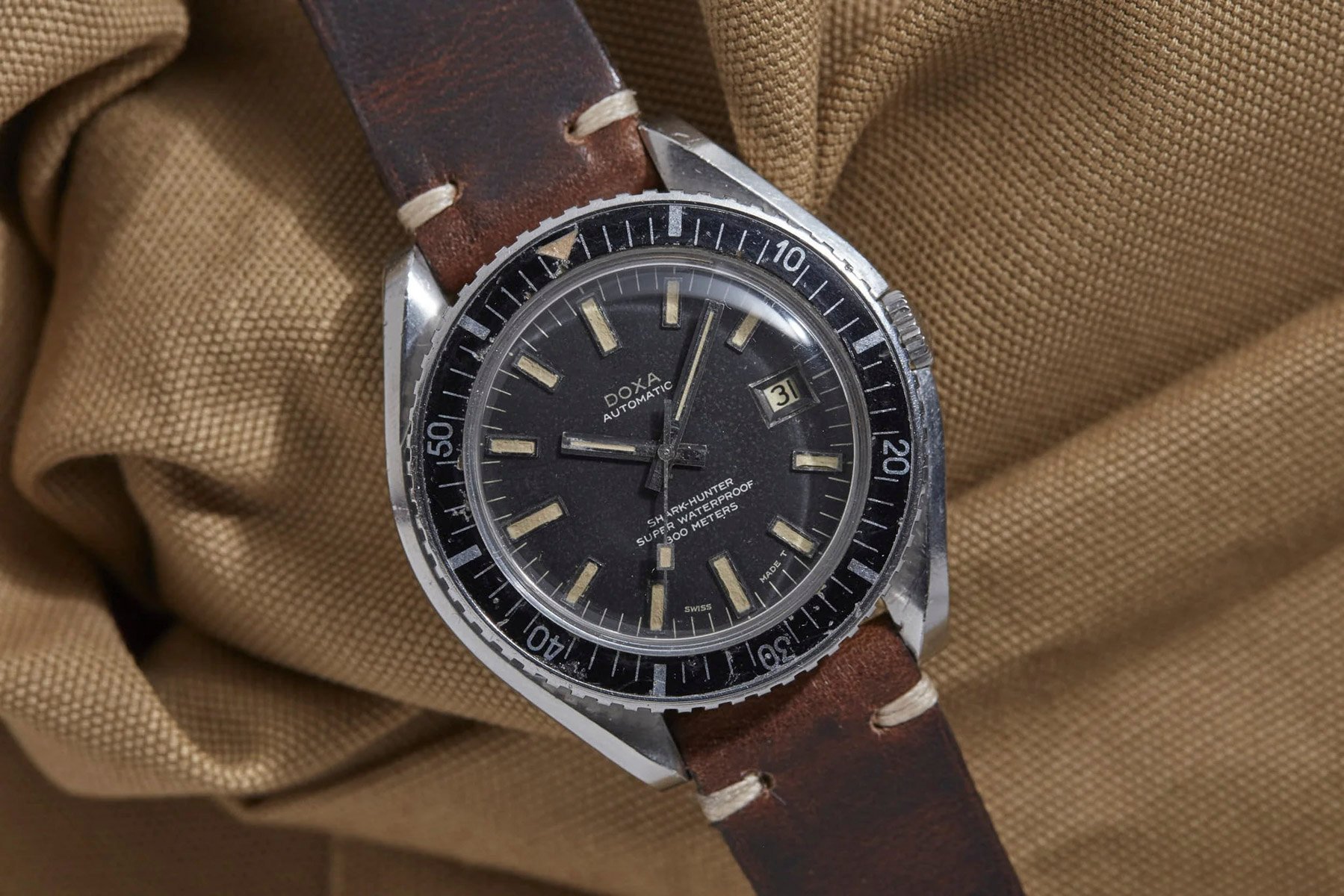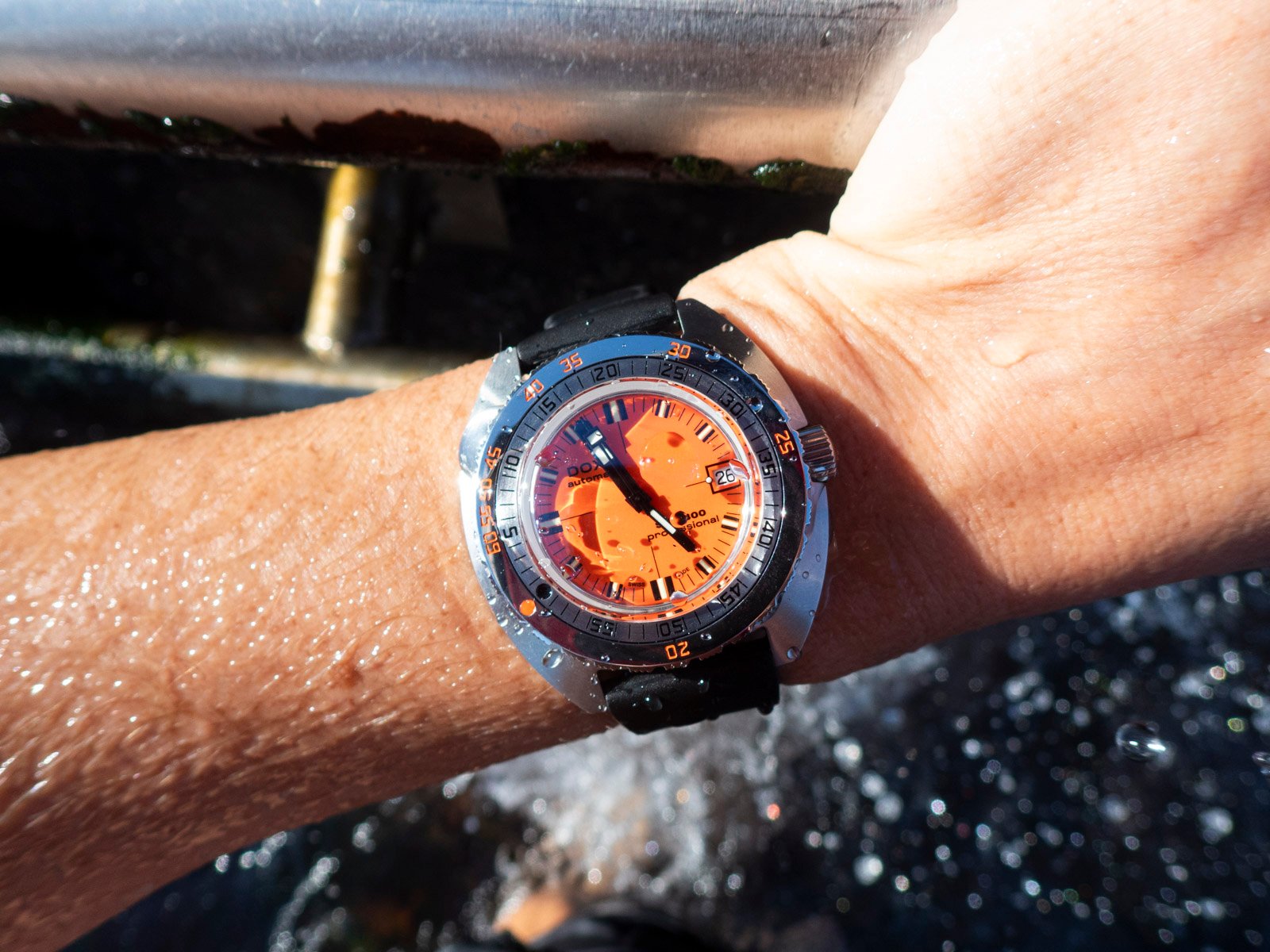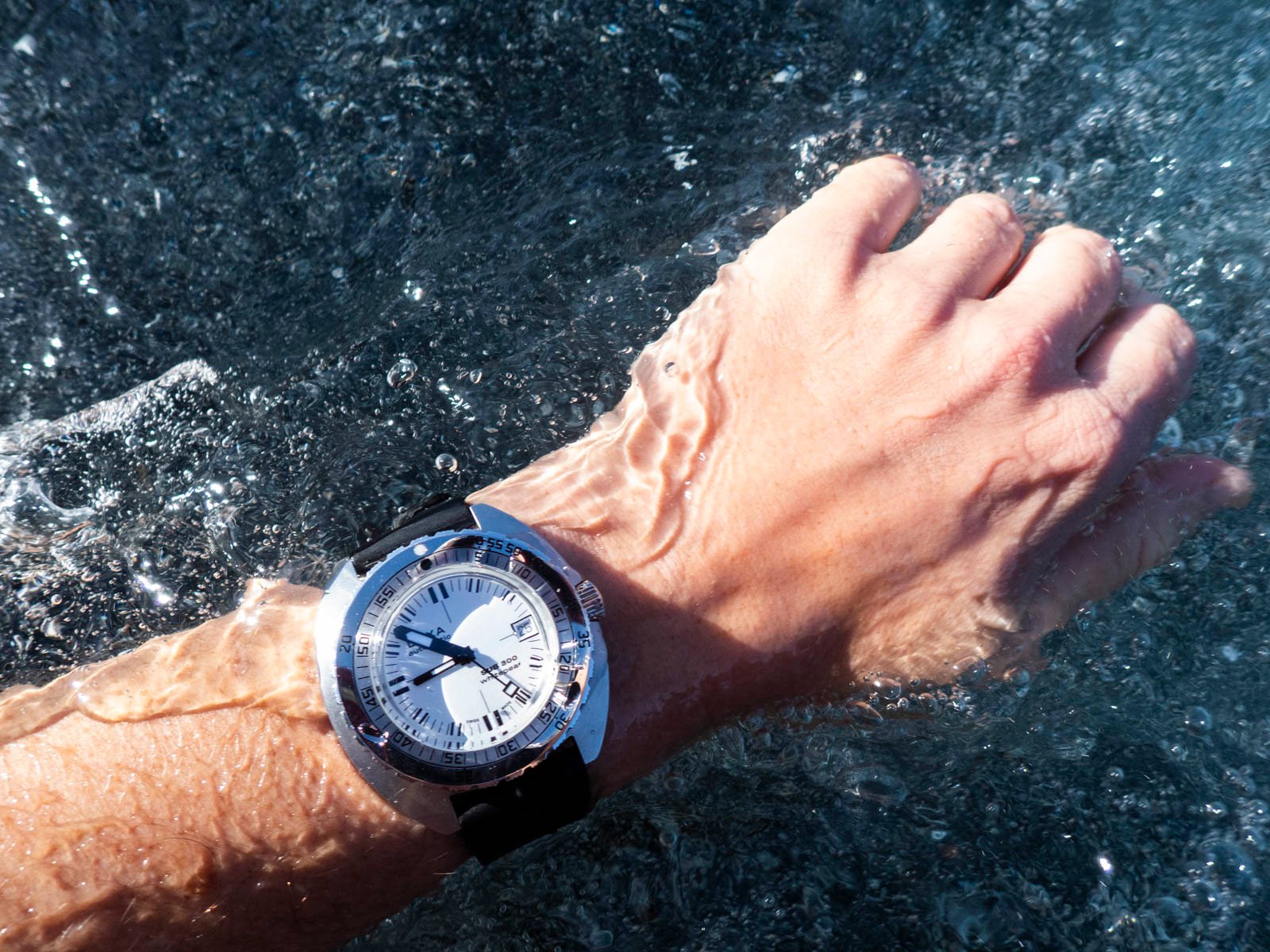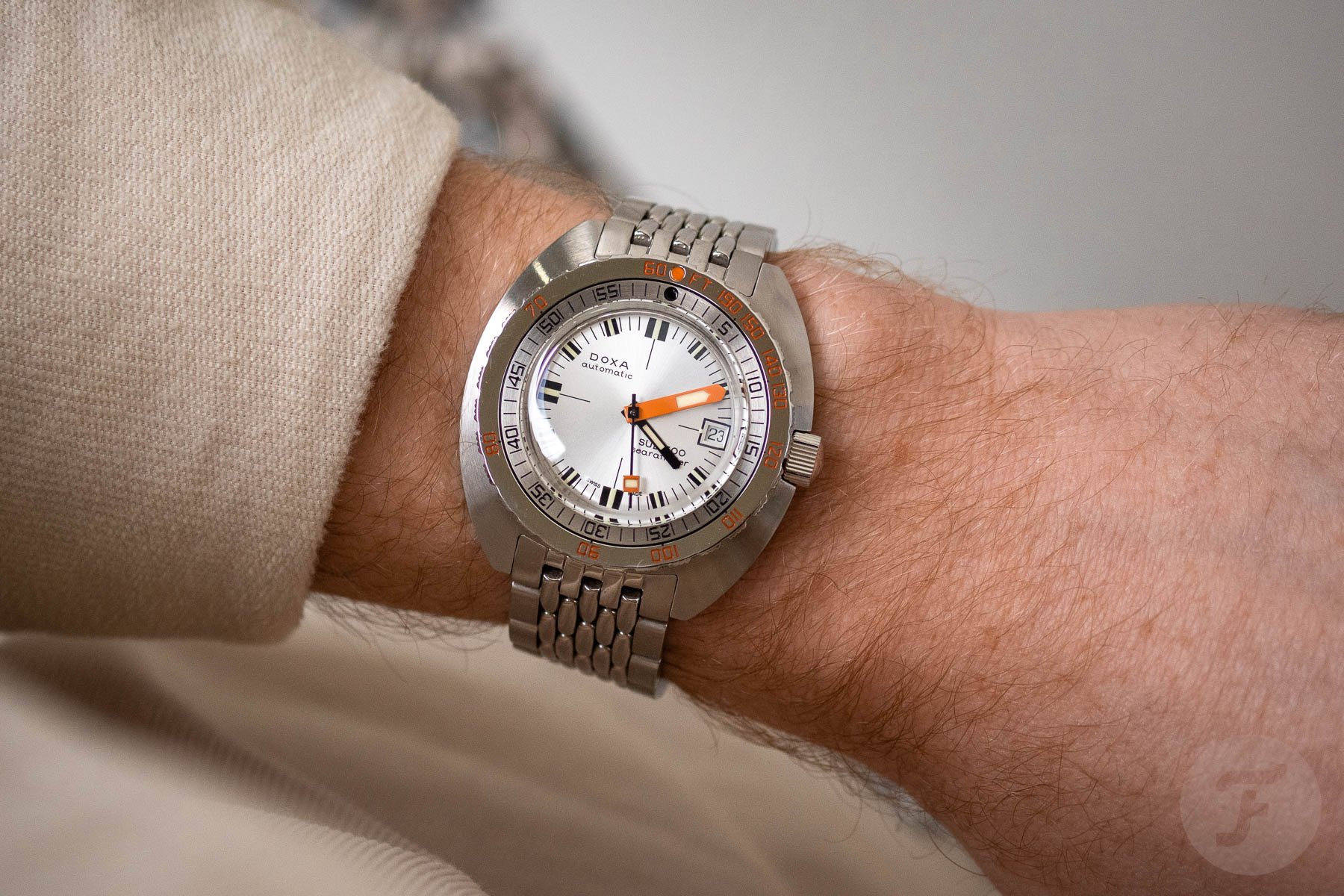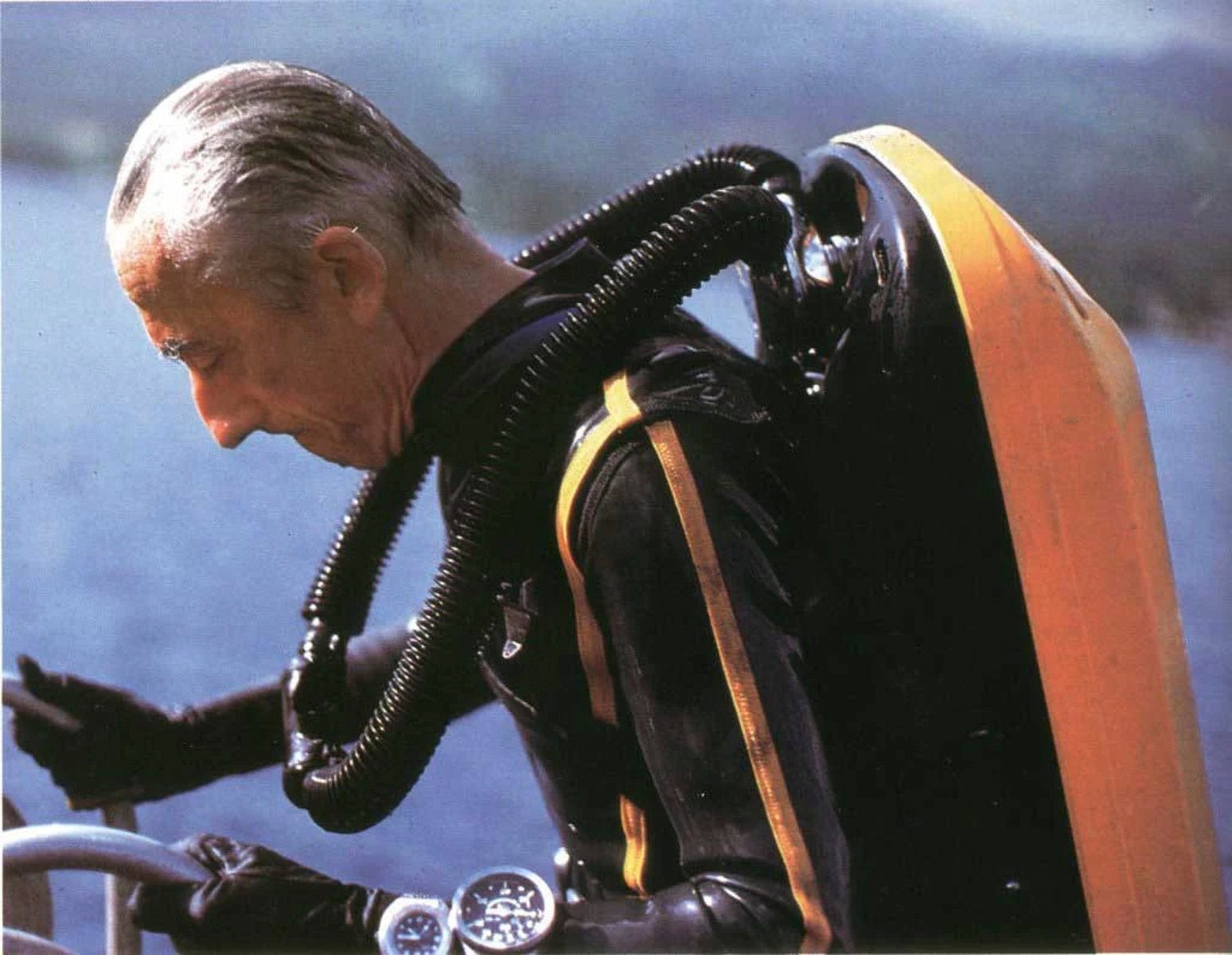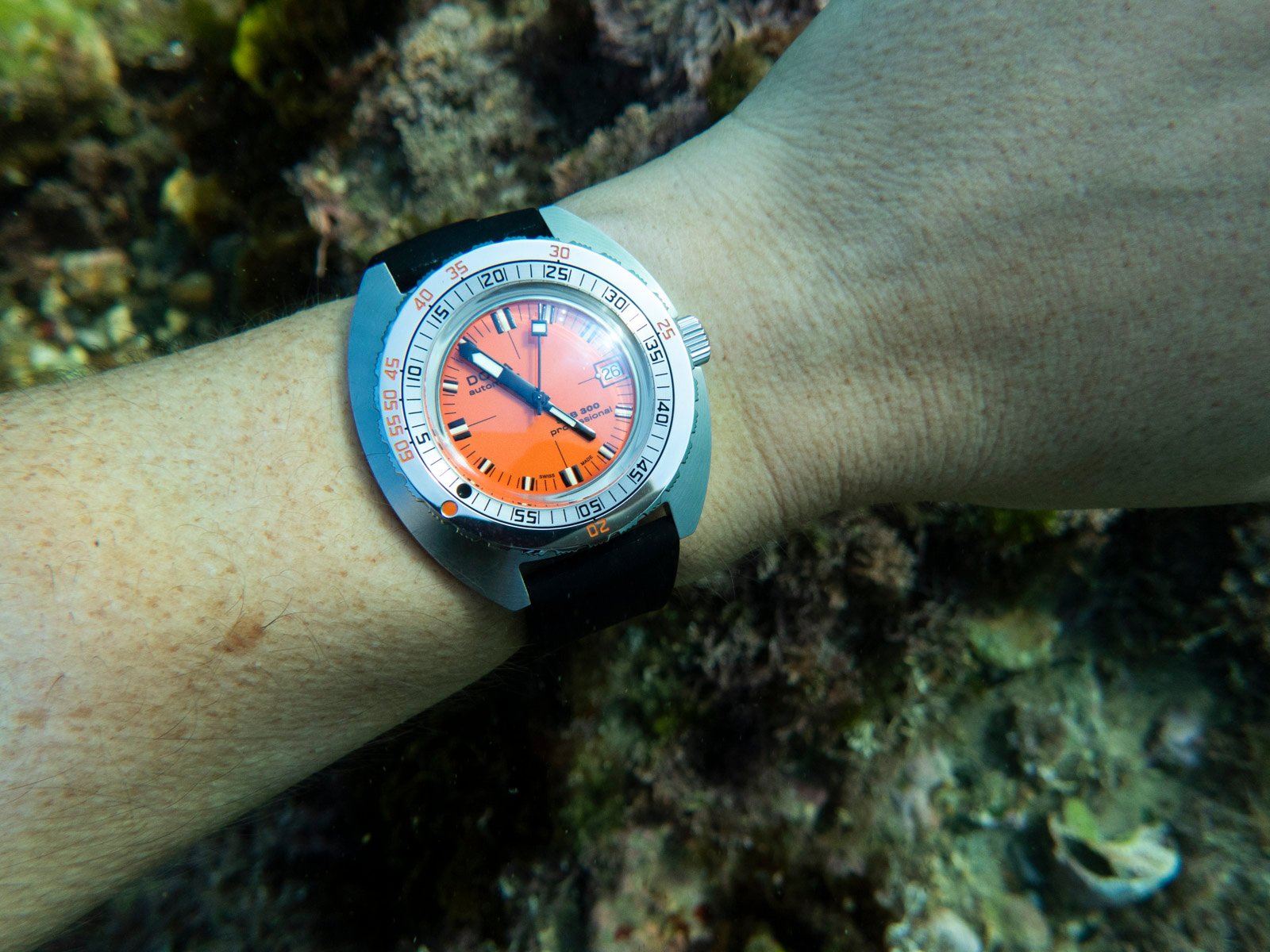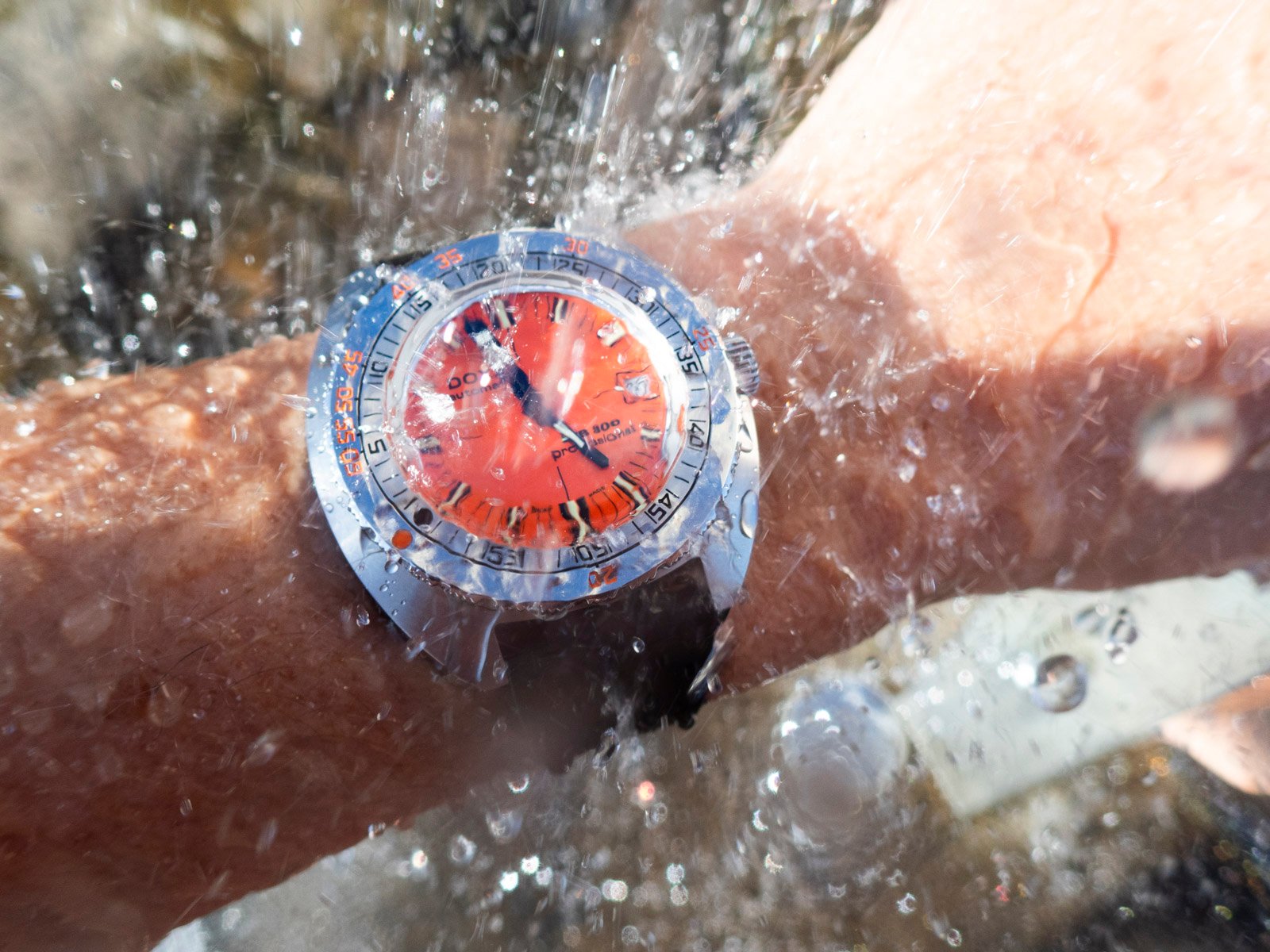Why The Doxa Sub 300 Is A Watch Icon Worth Your Time
The history of a watch can be vital for its ongoing success. But while Doxa’s Sub 300 had a storied past, the brand did not survive the Quartz Crisis. Thankfully, in recent years, under the stewardship of the Jenny family, Doxa has been going from strength to strength.
It is time that we had a conversation about Doxa. The brand’s hot release of the new Sub 200T caused a fair bit of chatter this year. Amid feelings of a relatively lukewarm Watches and Wonders 2024, Doxa’s release (just before the show started) sparked praise from many quarters, not just from longtime fans of the brand.
One of the elements of Doxa’s marketing success is probably that the Sub 200T debuted at a cheaper price than the existing Doxa Sub 300 and Sub 300T. Perhaps the release of sunray-dial versions also helped. Therefore, this seems like as good a time as any to discuss Doxa’s Sub 300. I’d like to highlight why the Doxa Sub 300 is a horological icon worth your time if you are in the market for a dive watch with a rich heritage. For those who want to dig even deeper than today’s article, I encourage you to check out this book by Doxa expert Dr. Peter Millar.
Doxa Sub ancestors
Our story starts in the early 1960s with the release of the brand’s first dive watch, the Doxa 11804-4 “Shark-Hunter.” Educated guesses put this watch’s production window between 1963 and the later part of the decade, making it relatively short. Its case came courtesy of Hugenin Frères et Cie., a company better known for the era’s Omega Speedmaster cases.
The Doxa 11804-4 Shark-Hunter had the same twisted-lug design as the Omega Speedmaster, Seamaster 300, and Eberhard Scafograf. It also had an elapsed-time bezel that would’ve, by then, been familiar to customers interested in a dive watch. It followed a standard pattern pioneered by the likes of Rolex, Blancpain, and Zodiac. However, even with a push-pull crown, the Doxa 11804-4 offered water resistance to an impressive 300 meters.
A design project from the ground up
Whether Doxa’s first dive watch was a commercial success is a mystery, but I guess it probably wasn’t. By the mid-to-late 1960s, the brand decided to create a far more specialized dive watch from the ground up. Urs Eschle, the product manager at Doxa behind this project, had worked at the company since 1956. It is believed that, in 1964, he initiated the project that would lead to the Doxa Sub 300.
But this would not be a normal design project. Eschle tasked the team with designing something from scratch and using professional divers as part of that process. The research team included the French diver Claude Wesly. The team members knew they had to emphasize certain elements that were important to a diver using a mechanical watch as a life-saving tool. One of these was the elapsed minutes. Thus, the designers focused on providing easy legibility with an oversized minute hand.
The Doxa Sub 300
Next, the designers needed to consider a method of incorporating decompression information. This would eventually take the form of the no-decompression (aka US Navy “no-deco”) bezel, which we still find on most of Doxa’s Sub watches today. This design would go on to inspire other watch companies’ designs, such as those by Jenny and (later) Ollech and Wajs. In addition, Doxa would provide these specialized diving watches on a beads-of-rice bracelet with two spring-loaded links and an expandable buckle. These would allow adaptability to the wider diameter of a diver’s wetsuit. The Expandro bracelet, as it came to be known, is an innovation many modern fans would love to see return someday.
By the time of the Basel watch fair in the spring of 1967, Doxa’s team was ready to release this new timepiece. It would use a cushion-shaped case design to help protect the crown, a vulnerable part of any watch. It also would debut with dials in black, silver, or orange, and would follow shortly after. Various dial colors had been tested in a Swiss lake by divers, and orange was claimed to be more legible than other options at shallow to medium depths (down to 30 meters). Thus, the Doxa Sub 300 was born.
Cutting-edge technology for its time
Doxa wanted to outperform rival watch brands in the dive-watch sector. Therefore, the Doxa Sub 300’s dial featured tritium, the most luminescent material seen up until that point on a wristwatch dial. Divers had tested the luminosity as part of their testing dives in Lake Neuchâtel, and it had worked admirably. Furthermore, the bezel teeth were incredibly beefy for the time, with a sawtooth design that would provide far more grip than other watch brands’ counterparts.
In a brilliant marketing move for the time, Doxa decided to engage with the US Divers company run by renowned explorer Jacques Cousteau. As part of this, Eschle traveled to California to meet Cousteau and his team and brought some Doxa Sub 300 watches with him. The team was impressed enough by the Sub 300 to start stocking it as a dive tool in the company’s shops. US Divers also become Doxa’s American retail partner.
Cousteau’s Calypso team went on to use the Doxa Sub 300 in many aquatic adventures, and Cousteau himself was pictured wearing a black-dial model. In addition to Cousteau’s team, the diving units of several militaries would end up acquiring Doxa Subs too, including France’s Marine Nationale.
A 21st-century reinterpretation of an iconic watch
Doxa brought out several new Subs as time wore on. These included the Sub 300T Conquistador in 1968 and Sub 600T in the early 1980s before the company ceased production. The Jenny family acquired Doxa in 1997, and in the 2000s, fresh life was breathed into what had become a dormant brand. Doxa released several limited-edition and small-batch Subs under the direction of Rick Marei, the mind now behind the rebirth of Aquastar.
Fast-forward to now, and the Jenny family continues to invest in the Doxa name. The modern Doxa Sub 300 is not a 1:1 recreation of the original Doxa Sub 300, but it comes very close in its design and capability. The current version, which I have reviewed here, has many likable traits. These include a modern construction, including a screw-down crown, sapphire crystal, etc. Other elements are missed by enthusiasts and divers alike, including an expandable bracelet and a class-leading application of luminescent material (I think we can all agree that current Doxa Subs need better lume).
Final thoughts
This was not supposed to be a comprehensive history of the Sub 300 as scholars have done that work before me. But I do hope this article encourages engagement with you all. I want to read your opinions on this design and this watch. As the story of Doxa continues to slowly seep beyond the watch enthusiasts’ subculture and into everyday consumers’ consciousness, more fans will surely emerge. Thankfully, despite its dormancy in the ’80s and ’90s, Doxa now looks to be continually on the rise. The recent release of an entry-level Sub 200T will hopefully also lead to an entry into new markets.
In my opinion, the modern Doxa Sub 300 has a history to match the Omega Seamaster 300 or Rolex Submariner, though it operates in a completely different price bracket. With a reliable (though increasingly dated) Sellita SW200-1 caliber, it is no rival to the Omega or the Rolex. It would be interesting to see a Sub 300 with an upgraded movement, perhaps a La Joux-Perret G100. And this is before we consider other elements like better Super-LumiNova or the bracelet and clasp design. To me, though, a Doxa Sub is still a viable and far more attainable alternative to dive watches from Rolex or Omega.
What do you think, Fratelli? Would you ever consider a Doxa Sub 300 over to a modern Omega Seamaster 300(M) or Rolex Submariner? Let me know in the comments.

